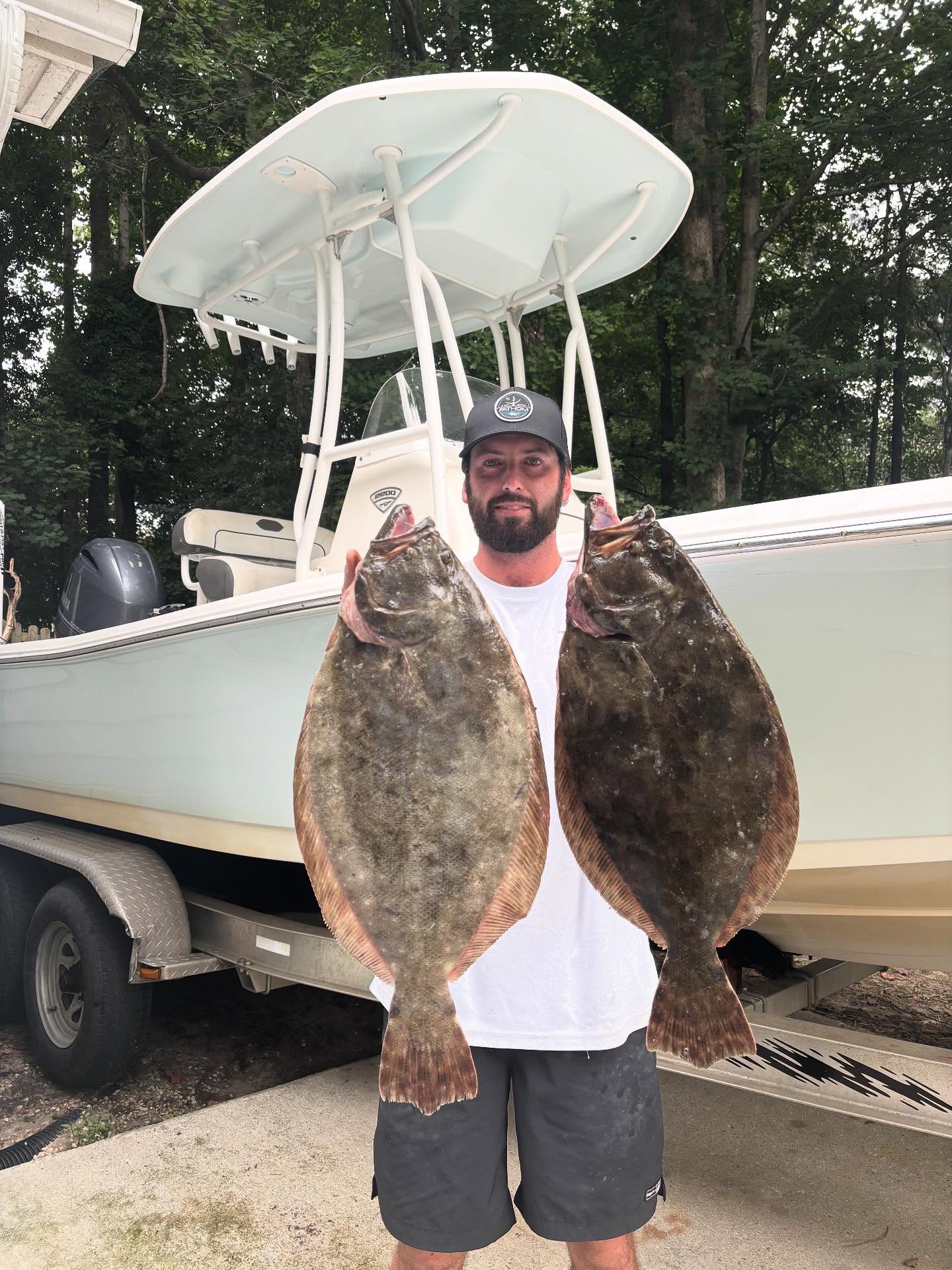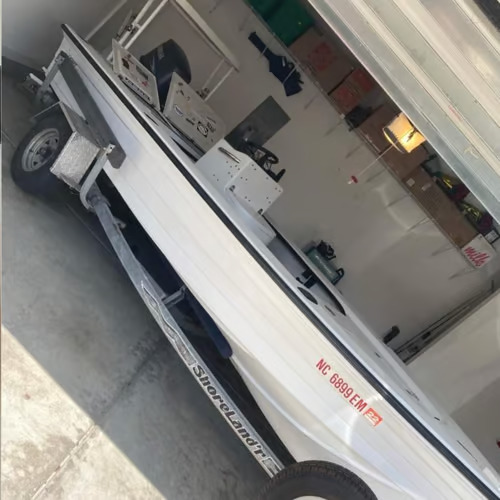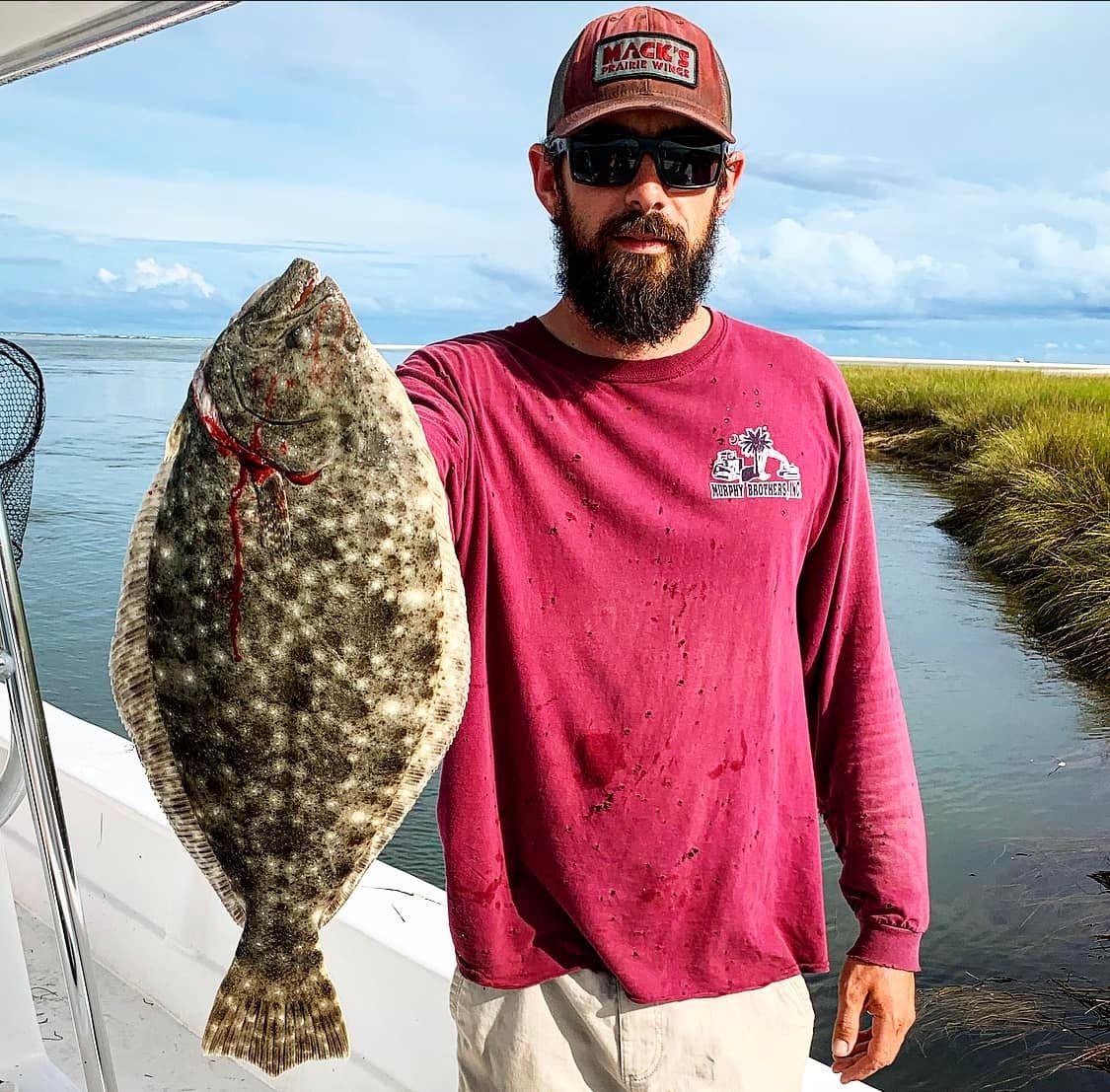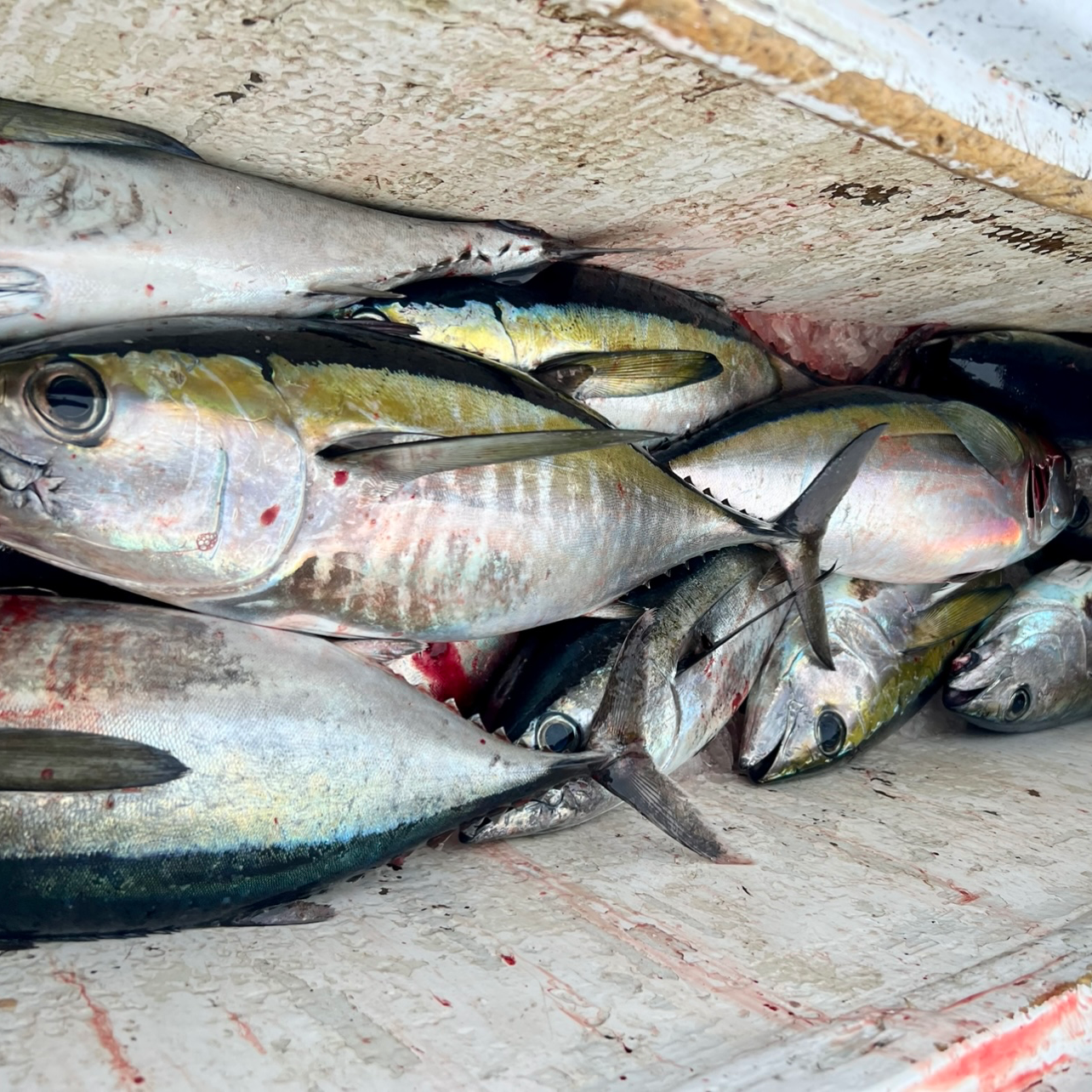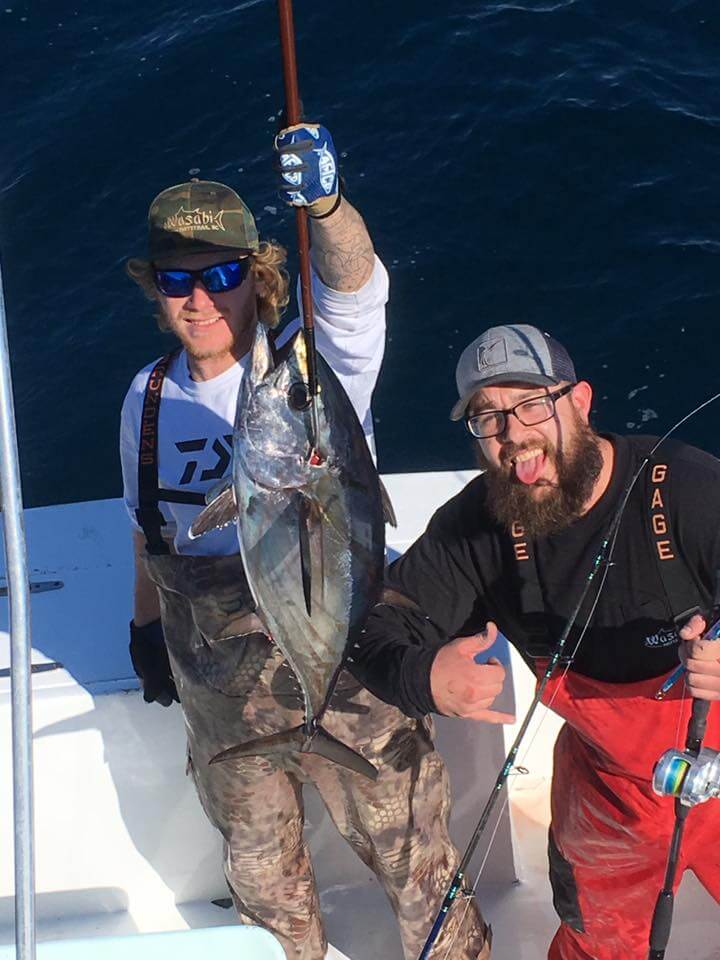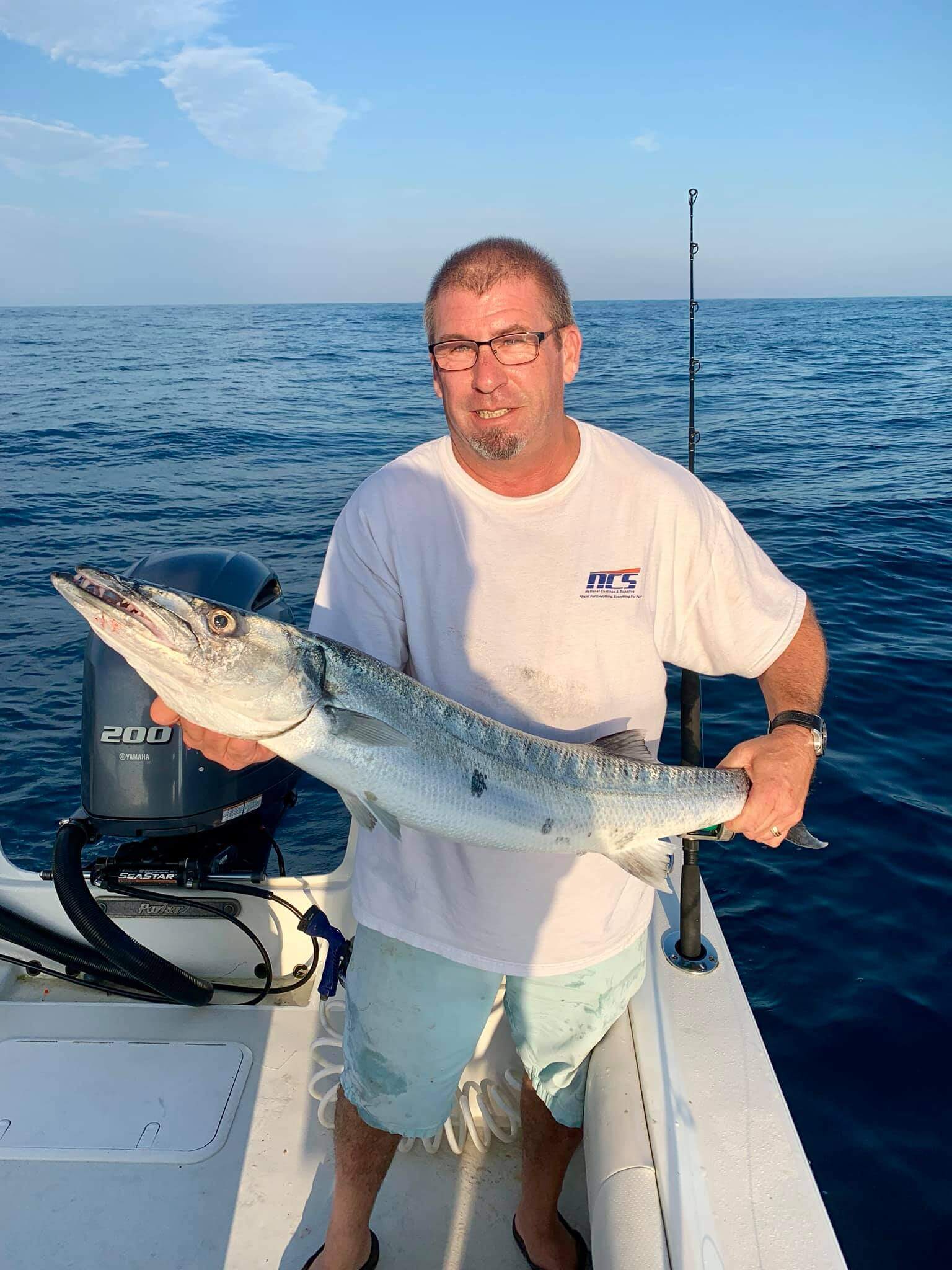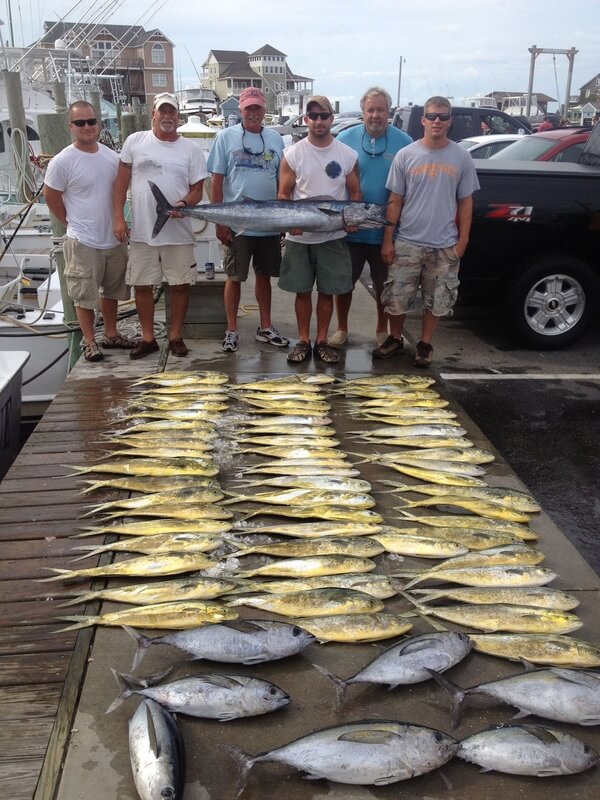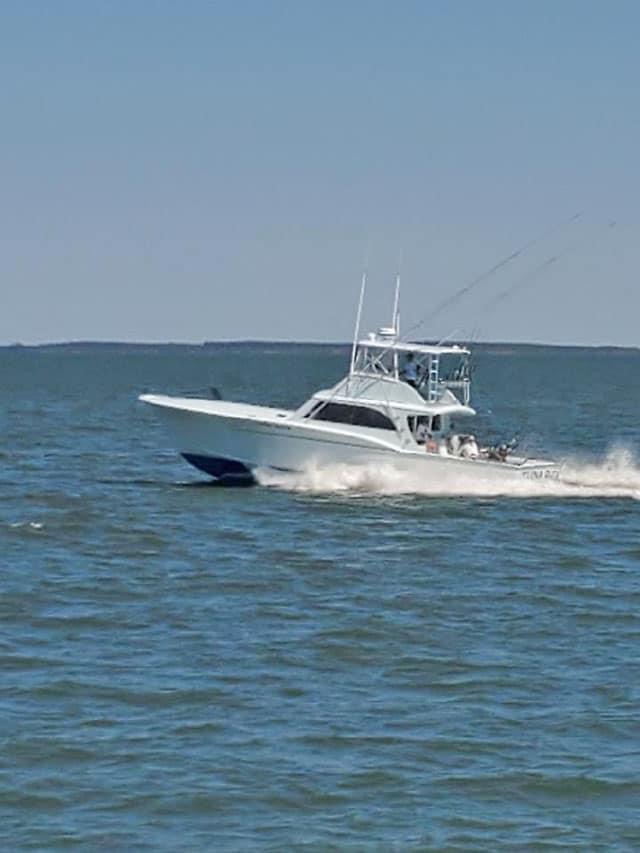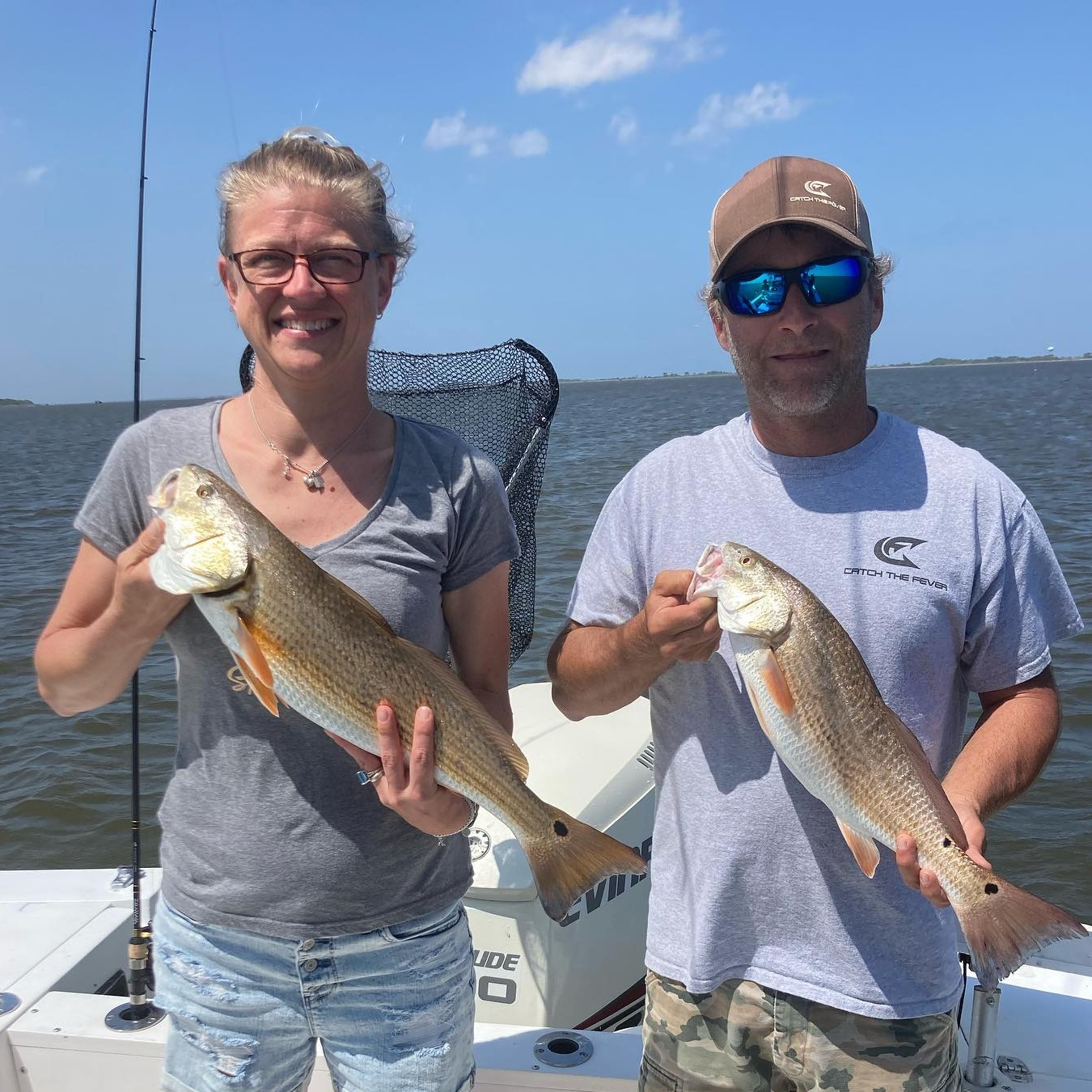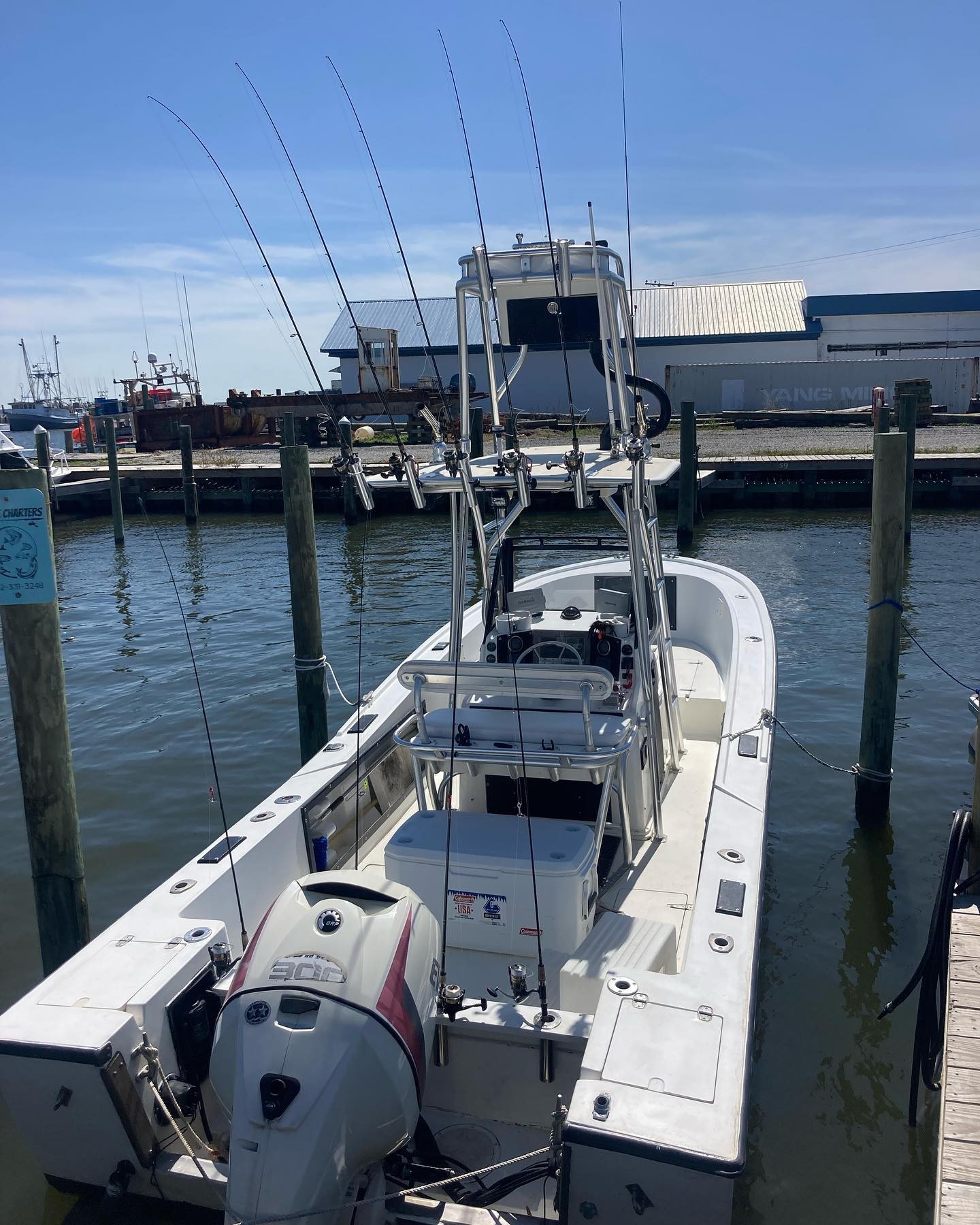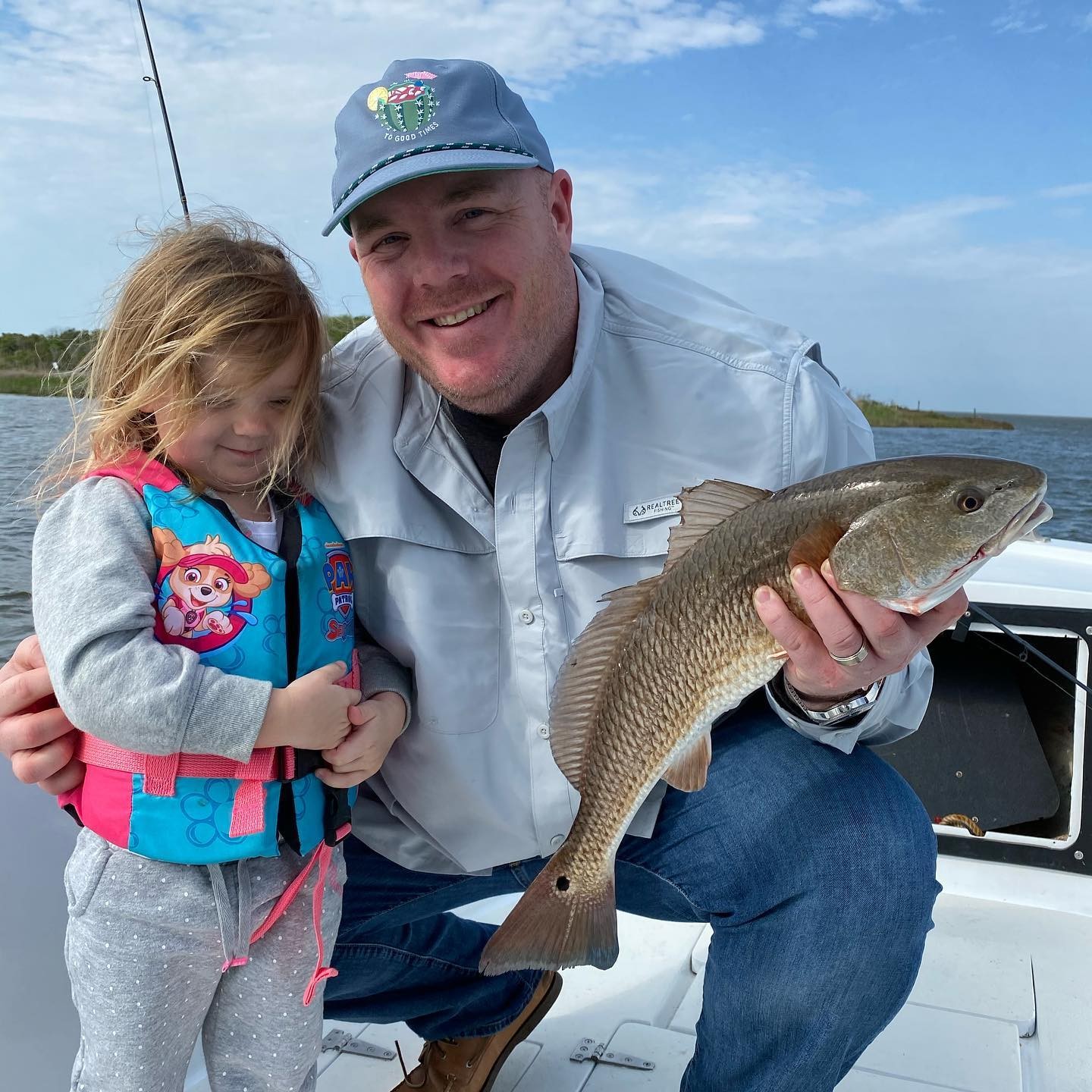Damn Good Guides
Experts Available 24/7
100% Weather Guarantee
Recently Booked Jetty Fishing Charters In North Carolina
Inshore, Nearshore, Jetty in Wilmington
4-hour Fall Fishing Trip
Inshore, Nearshore, Jetty in Harkers Island
NC Classic Inshore Fishing Trip
Inshore, Jetty, Flats in Harkers Island
Backwater Sightfishing, Fly/Spin
Inshore, Jetty, Flats in Beaufort
NC Inshore Slam
Nearshore, Jetty Fishing in Harkers Island
Nearshore Fly Fishing
Inshore, Nearshore, Jetty in Wanchese
Half Day(4hr) Inshore/Nearshore
Top Cities for Jetty Fishing in North Carolina
Top Species for Jetty Fishing in North Carolina
“Our Damn Good Guides go above and beyond, and we’ve handpicked every single one. We’re passionate about the outdoors and look forward to getting you out on the trip of a lifetime, every time.”
Jonathan and Attison | Co-founders | Austin, Texas
More Jetty Fishing Charters In North Carolina
Inshore, Nearshore, Jetty in Wanchese
Half Day(4hr) Inshore/Nearshore
Nearshore, Jetty Fishing in Harkers Island
Nearshore Fly Fishing
Inshore, Jetty, Flats in Beaufort
NC Inshore Slam
Inshore, Jetty, Flats in Harkers Island
Backwater Sightfishing, Fly/Spin
Inshore, Nearshore, Jetty in Harkers Island
NC Classic Inshore Fishing Trip
Inshore, Nearshore, Jetty in Wilmington
4-hour Fall Fishing Trip
Other Captain Experiences Trips in North Carolina
Float Trips, Full/Half Days
North Carolina Wade Trip
Inshore, Nearshore, River in Harkers Island
Nearshore Fishing Trip
Summer Offshore Run
Deep Sea, Nearshore Fishing in Wrightsville Beach
Fishing Special - 26’ C-Hawk
Nearshore Fishing in Wilmington
Wilmington Mixed Bag
Inshore, Nearshore Fishing in Hatteras
Hatteras Inshore Experience
Hatteras Inshore & Nearshore
Gulf Stream Deep Run
Yellowfin & Mahi Mahi Combo
Evening Fishing Adventure
OBX Inshore Adventure
Need a Place to Stay?
Everything to Know About Booking a North Carolina jetty fishing charter
What are the best jetty fishing charters in North Carolina?
The best jetty fishing charters in North Carolina are:
What is jetty fishing in North Carolina all about?
Jetty fishing in North Carolina offers anglers a unique and exciting way to target a variety of saltwater species along the state's picturesque coastline. Jetties, which are structures built to protect harbor entrances from erosion and waves, provide excellent fishing opportunities as they attract numerous fish species seeking shelter and food. Anglers can find jetties at various locations along the coast, with popular spots including Wrightsville Beach, Carolina Beach, and Oregon Inlet. These structures extend into deeper waters, creating habitats that support a rich diversity of marine life, making them ideal for both novice and experienced fishermen.
One of the key advantages of jetty fishing is the ability to catch a wide range of species throughout the year. In the warmer months, anglers can expect to find flounder, red drum, and speckled trout around the rocky structure of the jetties. These fish are often caught using live bait such as shrimp or minnows, as well as artificial lures like soft plastics and jigs. During the cooler months, the jetties attract species such as black drum, sheepshead, and tautog. Techniques for catching these fish typically involve using bait like fiddler crabs, sand fleas, and cut bait, with a focus on fishing near the rocks where these species like to hide.
Jetty fishing in North Carolina requires some preparation and knowledge to ensure a successful and safe experience. Anglers should use sturdy rods and reels capable of handling the rough conditions often found around jetties, as well as abrasion-resistant fishing line to withstand contact with the rocks. It's also important to be aware of the tides and currents, which can significantly impact fishing conditions and fish behavior. Wearing proper footwear with good grip is crucial for navigating the slippery and uneven surfaces of the jetties. With the right gear and techniques, jetty fishing can provide a rewarding and enjoyable experience, offering the chance to catch a variety of prized saltwater species while enjoying the beautiful coastal scenery of North Carolina.
What are the most popular months to go jetty fishing in North Carolina?
Jetty fishing in North Carolina is influenced by the changing seasons, which affect both the types of fish available and the techniques used to catch them. Spring marks the beginning of a productive fishing period as water temperatures rise and various fish species become more active. Anglers can expect to catch species such as flounder, bluefish, and speckled trout during this time. These fish are attracted to the jetties' structure, where they find ample food and shelter. Spring fishing often involves using live bait like shrimp and minnows or artificial lures such as jigs and soft plastics to entice these hungry fish.
Summer brings a diverse array of species to North Carolina's jetties, including red drum, Spanish mackerel, and sheepshead. The warm waters and abundant food sources make the jetties a prime fishing spot. Anglers can enjoy targeting these species with various techniques, such as bottom fishing with cut bait or live bait for sheepshead and red drum, or casting small spoons and jigs for Spanish mackerel. Early mornings and late evenings are often the best times to fish during the summer months, as fish are more active in the cooler parts of the day.
As fall arrives, the fishing scene at the jetties remains vibrant with species like black drum, striped bass, and tautog becoming more prevalent. Cooler water temperatures and migrating fish create excellent fishing opportunities. Anglers often use bait such as fiddler crabs, sand fleas, and cut bait to target black drum and tautog near the rocks and structure of the jetties. Striped bass can be caught using larger lures or live bait, especially during their fall migration. Winter, while generally slower, still offers some action for hardy anglers, particularly for species like tautog and black drum, which remain active in the colder months. Overall, each season brings its own unique fishing experiences and challenges, making jetty fishing in North Carolina a year-round pursuit for dedicated anglers.
What techniques are popular for jetty fishing in North Carolina?
Jetty fishing in North Carolina offers a range of techniques and methods to target the diverse species that inhabit these structures. One common method is bottom fishing, which is particularly effective for species like flounder, black drum, and sheepshead. Anglers use sturdy rods and reels, along with sinker rigs or drop-shot setups, to present baits such as shrimp, minnows, or fiddler crabs near the rocky bottom. This technique takes advantage of the natural hiding spots created by the jetty's structure, where these fish often forage for food.
Another popular technique is casting with artificial lures, which can be highly effective for catching species like bluefish, Spanish mackerel, and speckled trout. Anglers typically use medium to light tackle and a variety of lures, including soft plastics, jigs, and spoons. These lures mimic the movement and appearance of small baitfish, attracting predatory fish that patrol the areas around the jetty. Casting and retrieving at different speeds and depths can help determine what the fish are responding to on any given day, making this a versatile and engaging method.
Live bait fishing is also a favored technique for jetty anglers targeting species like red drum and striped bass. Using live bait such as mullet, menhaden, or shrimp, anglers can free-line their baits or use float rigs to suspend the bait at various depths. This approach is particularly effective during periods of strong tidal movement, which can bring larger predatory fish close to the jetty in search of an easy meal. Ensuring the live bait is presented naturally and maintaining a vigilant watch on the line for subtle bites are key to success with this technique. Each method offers its own unique challenges and rewards, making jetty fishing in North Carolina a dynamic and exciting experience for anglers.
What species are popular for jetty fishing in North Carolina?
Jetty fishing in North Carolina offers anglers a diverse range of species to target, thanks to the state's rich coastal ecosystem. One of the most sought-after species is the red drum, also known as redfish. These fish are prized for their fighting ability and can often be found near jetty rocks, especially during the warmer months. Anglers typically use live bait like shrimp or mullet to entice these powerful fish, making for an exciting and rewarding fishing experience.
Another popular species to catch when jetty fishing in North Carolina is the flounder. These flatfish are known for their delicious, flaky meat and are commonly found around the rocky structures of jetties. They tend to stay close to the bottom, so anglers often use bottom rigs with live bait such as minnows or artificial lures that mimic small fish. Flounder fishing requires a bit of patience and a light touch, but the payoff can be a tasty meal.
Sheepshead is another species that anglers often target at North Carolina jetties. Recognizable by their black and white striped bodies and human-like teeth, sheepshead are known for their tendency to hang around rocky areas and pilings. They feed on crustaceans and barnacles, so using fiddler crabs or shrimp as bait can be particularly effective. Fishing for sheepshead can be a bit challenging due to their subtle bite, but they are well worth the effort due to their excellent table fare and the fun challenge they provide.
Recent Reviews
The Best Places to Fish in North Carolina
Featured Cities
- Fishing Charters Near Me
- Austin Fishing Guides
- Biloxi Fishing Charters
- Bradenton Fishing Charters
- Cabo San Lucas Fishing Charters
- Cancun Fishing Charters
- Cape Coral Fishing Charters
- Charleston Fishing Charters
- Clearwater Fishing Charters
- Corpus Christi Fishing Charters
- Crystal River Fishing Charters
- Dauphin Island Fishing Charters
- Daytona Beach Fishing Charters
- Destin Fishing Charters
- Fort Lauderdale Fishing Charters
- Fort Myers Fishing Charters
- Fort Walton Beach Fishing Charters
- Galveston Fishing Charters
- Gulf Shores Fishing Charters
- Hatteras Fishing Charters
- Hilton Head Fishing Charters
- Islamorada Fishing Charters
- Jacksonville Fishing Charters
- Jupiter Fishing Charters
- Key Largo Fishing Charters
- Key West Fishing Charters
- Kona Fishing Charters
- Lakeside Marblehead Fishing Charters
- Marathon Fishing Charters
- Marco Island Fishing Charters
- Miami Fishing Charters
- Montauk Fishing Charters
- Morehead City Fishing Charters
- Naples Fishing Charters
- New Orleans Fishing Charters
- New Smyrna Beach Fishing Charters
- Ocean City Fishing Charters
- Orange Beach Fishing Charters
- Panama City Beach Fishing Charters
- Pensacola Fishing Charters
- Pompano Beach Fishing Charters
- Port Aransas Fishing Charters
- Port Orange Fishing Charters
- Rockport Fishing Charters
- San Diego Fishing Charters
- San Juan Fishing Charters
- Sarasota Fishing Charters
- South Padre Island Fishing Charters
- St. Augustine Fishing Charters
- St. Petersburg Fishing Charters
- Tampa Fishing Charters
- Tarpon Springs Fishing Charters
- Venice Fishing Charters
- Virginia Beach Fishing Charters
- West Palm Beach Fishing Charters
- Wilmington Fishing Charters
- Wrightsville Beach Fishing Charters
How are fishing conditions in North Carolina?
View North Carolina Fishing Reports from our damn good guides.
Didn't Find What You Were Looking For?
Our guides are Damn Good Guides, which means they’re vetted by our team of outdoor experts who know them on a first-name basis. We hand pick each and every one of them, and our network spans all across the US and beyond.
The proof is in the pudding, and we’re incredibly proud of our 4.9 / 5 average review score. Hit the button below to see more trip options:


